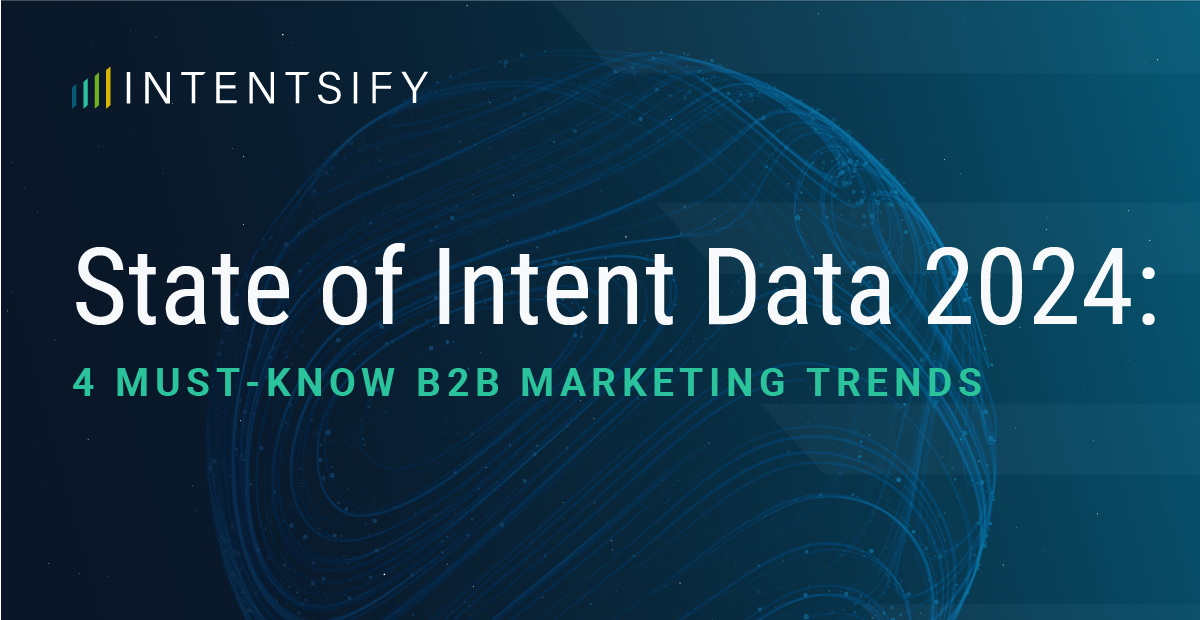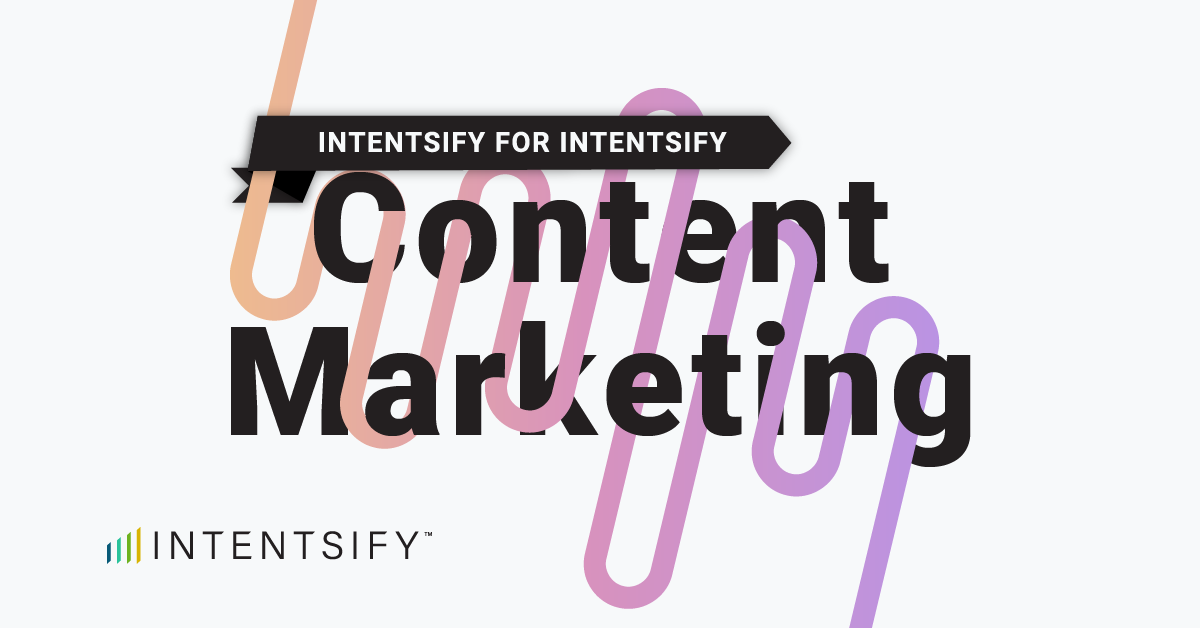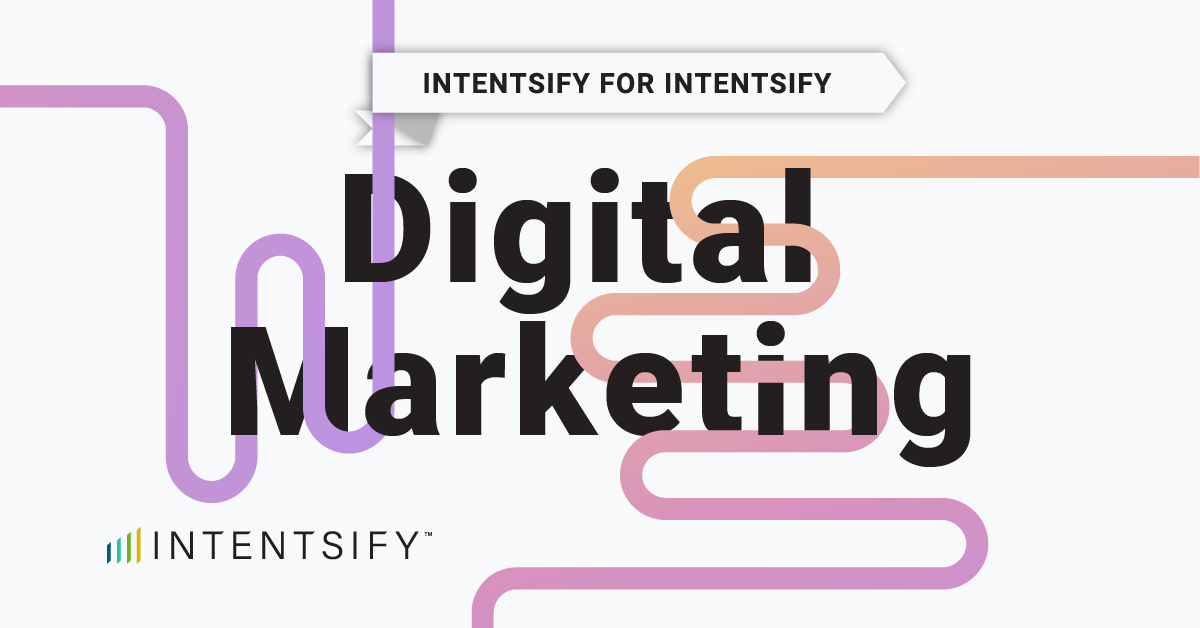Picture this: Your prospect just spent 20 minutes researching their top business challenges on three different vendor websites. Two hours later, they see an ad from you about a completely different topic. Meanwhile, your competitor serves them an ad with a guide that addresses their exact needs — content personalization in action.
Guess which ad gets clicked on?
This scenario plays out thousands of times daily across B2B organizations. Companies are sitting on a treasure trove of behavioral intelligence — knowing exactly what their prospects are researching — yet most are still blasting generic messages like it’s 2005. The disconnect isn’t just wasteful; it’s costing real revenue.
How Can Intent Data Be Used for Message Selection and Content Personalization?
Intent data allows you to use behavioral insights to develop and deliver highly targeted messages and content that resonate with specific audience segments. Instead of broadcasting the same generic message to your entire database, you’re using real-time intent signals to understand what your prospects are actively researching, then crafting personalized communications that speak directly to their current interests and pain points.
Think of it as having a crystal ball that reveals what your prospects are thinking about, allowing you to join their internal conversations with relevant, timely content that feels less like marketing and more like helpful guidance.
The Current State: A Massive Missed Opportunity
Here’s a startling reality check: More than half of organizations rate their ability to create targeted content as average, fair or poor.
Even more surprising? Research shows that just 40% of B2B marketing professionals reported currently using intent data for “message selection or optimization”. This represents a massive untapped opportunity in the market.
While most organizations focus on basic lead generation and account identification, the real power of intent data lies in its ability to inform what you say and how you say it.
Where Message Selection Fits in Your Intent Data Journey
The Three Stages of Intent Data Maturity
Understanding where message selection and content personalization fits within your broader intent data strategy is crucial for implementation success.
Stage 1: Foundation Building (Easiest to Implement)
- Account Identification and Selection
- Digital Advertising
- Lead Generation
- Message Selection and Content Personalization ← You are here
Stage 2: Advanced Targeting (Moderate Difficulty)
- Lead/Account Scoring
- Account Prioritization/Pipeline Acceleration
- Churn Prevention
- Upsell/Cross-Sell
Stage 3: Strategic Intelligence (Most Difficult)
- Market Intelligence
- Event Planning
The beauty of message selection and content creation is that it sits in Stage 1, making it one of the more accessible ways to extract immediate value from your intent data investment.
Who Benefits from Intent-Driven Message Selection?
Marketing Teams
Marketing professionals use intent data for message selection across multiple disciplines:
- Content Marketing: Creating topic-specific content that aligns with active research behaviors
- Product Marketing: Developing messaging that addresses specific product interests and competitive considerations
- Demand Generation: Crafting campaigns that speak to current market interests and trending topics
Sales Teams
Sales organizations leverage intent insights to enhance their outreach effectiveness:
- Business/Sales Development Reps (BDRs/SDRs): Personalizing cold outreach with relevant talking points
- Account Executives: Developing account-specific strategies based on research behaviors and competitive intelligence
Customer Success Teams
Customer success professionals use intent data to:
- Identify expansion opportunities based on research into additional product areas
- Prevent churn by recognizing when customers are researching competitive solutions
- Proactively address customer needs based on their evolving interests
Why Message Selection and Content Personalization Matters
1. Boost Demand-Funnel Conversion Rates
When your messages align with what prospects are actively researching, engagement rates skyrocket. Instead of interrupting their day with irrelevant content, you’re joining an ongoing conversation in their minds. This relevance translates directly into:
- Higher email open rates
- Increased click-through rates
- Better webinar attendance
- More qualified demo requests
2. Improve Prospect Experience and Engagement
Nobody likes feeling like they’re just another name on a marketing list. Intent-driven messaging creates a personalized experience that feels consultative rather than promotional. When prospects receive content that directly addresses their current challenges and interests, they perceive your organization as:
- More knowledgeable about their industry
- Better aligned with their specific needs
- A trusted advisor rather than just another vendor
3. Optimize Sales Follow-Up Efforts
Sales teams armed with intent intelligence can prioritize their time more effectively and approach conversations with greater confidence. Instead of generic discovery calls, they can enter conversations already knowing what prospects are researching, allowing for more strategic and productive interactions.
How to Implement Intent-Driven Message Selection
Understanding the Buyer’s Journey Approach
While we often use the term “funnel” for ease of audience segmentation and targeting, it’s important to recognize that B2B buyers don’t operate this way. The buyer’s journey is complex and non-linear, involving multiple personas within the buying group who may be at different stages simultaneously. Some stakeholders might be in early research mode while others are already evaluating specific solutions.
Rather than thinking in traditional funnel terms, message selection and content personalization should be based on where each specific account and their personas are in their unique buyer’s journey. This means:
- Account-level insights: Understanding the overall research patterns and interests of the organization
- Persona-level customization: Recognizing that the CFO, IT decision-maker, and end-user may have different concerns and be at different stages
- Dynamic messaging: Adapting your content to match the current state and needs of each collective buying group
This approach allows you to deliver relevant, timely messages that speak to the specific concerns and stage of each buying group member, rather than applying a one-size-fits-all funnel-based strategy.
Three Core Implementation Strategies
1. Message and Content Selection for Email Nurture Campaigns: Analyze intent signals to identify the specific interests, concerns, and needs of targeted accounts. Use these insights to:
- Select existing content pieces that align with research behaviors
- Create new content that addresses trending topics in your target market
- Sequence messaging that follows the natural progression of the buyer’s journey
- Personalize subject lines and preview text based on active research areas
2. Website Personalization: Build dynamic website experiences that adapt to visitor intent:
- Create landing pages customized to specific account segments based on their research activities
- Display relevant case studies and testimonials from similar companies
- Highlight product features that align with active research topics
- Adjust call-to-action messaging based on where prospects are in their buying journey
3. Sales Talk Track Development: Equip your sales team with intelligence-driven conversation starters:
- Provide account-specific research insights before outreach calls
- Develop messaging frameworks that address commonly researched topics
- Create competitive battle cards for accounts researching competitor solutions
- Design follow-up sequences that build on identified interests and pain points
Best Practices for Success
Start with Clear Segmentation
Before diving into message creation, ensure you have well-defined audience segments based on:
- Industry verticals
- Company size
- Technology stack
- Current solution usage
- Buying stage indicators
Test and Iterate
Intent-driven messaging is not a set-it-and-forget-it strategy. Continuously monitor performance metrics and refine your approach based on:
- Engagement rates by message type
- Conversion rates by intent topic
- Sales feedback on message effectiveness
- Account progression through the funnel
Align Sales and Marketing
The most successful implementations happen when sales and marketing teams collaborate closely on:
- Defining ideal customer profiles
- Agreeing on lead qualification criteria
- Sharing feedback on message effectiveness
- Coordinating follow-up sequences
The Bottom Line
Message selection and content personalization represents one of the most accessible yet powerful applications of intent data. By moving beyond basic lead identification to strategic message customization, organizations can dramatically improve their conversion rates, enhance prospect experiences, and optimize their sales efforts.
The opportunity is massive, and the competition is still catching up. Organizations that implement intent-driven messaging strategies now will have a significant competitive advantage as the market continues to evolve toward more personalized, intelligent customer engagement.
Ready to transform your approach to message selection and content personalization? The data is there — it’s time to put it to work.






